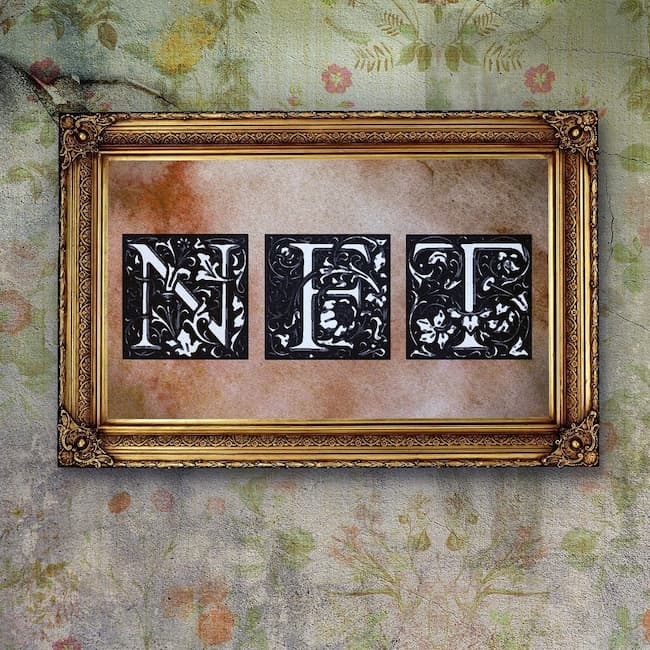Compliance
Art Market Goes Digital: Risk, Opportunity, And Regulatory Concerns For Wealth Managers

The authors argue that while NFTs offer exciting opportunities for investment, they also present new challenges in the government’s fight against money laundering. Family wealth management professionals, investors, and businesses must understand the inherent risks and adapt.
The following article, from Dan Schnapp and Edwin Kellermann, of the law firm Dentons, (more details about the writers below), explores the intersection of fine art, digital assets and technologies such as blockchain, with wealth management. With a focus on the US, the article is also relevant to art investors, advisors, compliance specialists and digital assets enthusiasts around the world.
The editorial team is pleased to share these insights, and of course, we invite readers to jump into the debate. The usual editorial disclaimers apply. Email tom.burroughes@wealthbriefing.com
Art market sales, reaching a staggering $67.8 billion in 2022, are more than just a testament to the thriving world of art. (1) They represent a vast ocean of investment potential that high net worth individuals and families are increasingly keen to explore. As the art market expands, so does government regulation, seeking to root out illicit activities that threaten market integrity. This evolving regulatory landscape is a call to arms for wealth managers and their clients, who must stay vigilant to protect their investments and seize new opportunities.
The newest opportunity lies in a unique type of digital asset created using blockchain technology. Non-fungible tokens (NFTs), have surged into the limelight in recent years, with $44.2 billion worth of cryptocurrency sent to NFT-related contracts in 2021, up from $106 million in 2020. (2) NFTs are not just a new form of digital art, but a novel way to represent ownership of various assets that is reshaping the investment landscape for high net worth individuals. As wealth managers, understanding the unique characteristics of NFTs is crucial for steering clients through this digital frontier. The rise of NFTs is not just a trend, but a seismic shift in the investment world that wealth managers must understand and be prepared to navigate.
The meteoric rise in NFT transactions is reshaping the high-value art market entirely, and simultaneously has sparked increased interest from the US Department of the Treasury due to such transactions being used as a potential avenue for money laundering and terror financing. (3) This state of flux may mean that important changes are coming for all market participants, as it does with the securities or real estate markets.
NFTs: The new frontier of financial
maneuverability?
While NFTs have many features that make them a compelling asset
class for investors, they also present new challenges for wealth
managers. Each NFT contains distinct information that
distinguishes it from other tokens, and this information is
stored in the blockchain, providing proof of ownership and
authenticity. NFTs can represent ownership of unique items or
pieces of content, such as digital art, music, or virtual real
estate.
Unlike cryptocurrencies such as bitcoin or Ethereum, which are fungible, NFTs are unique and cannot be exchanged on a like-for-like basis. Transactions involving NFTs are also pseudonymous, meaning that parties are identified by their digital addresses rather than their legal names. This, combined with the extremely subjective nature of their valuations, makes it difficult to trace the origin and destination of funds, especially when transactions are layered through multiple addresses.
According to the US government, pseudonymity and dubious
valuations are not mere features, but instead are loopholes that
make NFT transactions fertile ground for financial crimes. For
instance, in a method known as "wash trading," an individual
can purchase an NFT they already own by using different private
keys, effectively obscuring the origin of illicit funds.
Regulators are also concerned about a maneuver dubbed a
‘rug-pull’, in which the proceeds collected from the sale of NFTs
are transferred to anonymous cryptocurrency wallets, with the
NFT’s website being subsequently shut down after the transfer has
taken place. The high degree of open access and mobility allows
funds to flow across borders undetected, with NFT market
platforms that notably range in structure, operation, and
jurisdiction.
The US regulatory landscape
The US Department of Justice (DOJ) is taking decisive steps to
combat these activities and even suggested that NFTs should fall
under anti-money laundering laws. This indicates a growing
recognition of the present legal risks associated with NFTs.
(4) Furthermore, the US Securities and Exchange Commission
(SEC) has also shown interest in NFTs, particularly fractional
NFTs, and has announced a near doubling of its staff to focus on
crypto asset enforcement. (5) This growing regulatory attention
was recently demonstrated when the DOJ charged two individuals
with conspiracy to commit wire fraud and money laundering in
connection with a million-dollar rug-pull scheme involving the
sale of NFTs known as "Frosties." (6) Wealth managers have a
crucial role to play, as the DOJ and SEC increase their scrutiny
of NFTs.
The Treasury's warning: Risk management in the NFT
market
The Department of the Treasury's (DOT) recent report is a stark
reminder of the potential risks associated with the art market
and NFTs. For wealth managers, understanding these risks is not
just a necessity, but a responsibility. In 2022, the DOT
published the Study of the Facilitation of Money Laundering
and Terror Finance Through the Trade in Works of Art. (7) In
the Report, the DOT warned that “the ability to transfer
some NFTs via the internet without concern for geographic
distance and across borders nearly instantaneously makes digital
art susceptible to exploitation by those seeking to launder
illicit proceeds of crime because the movement of value can be
accomplished without incurring potential financial, regulatory,
or investigative costs of physical shipment.” Further, the DOT
stated that “most art market participants, including some
entities that provide financial services within the high-value
art market, are [also] not subject to anti-money
laundering/countering the financing of terrorism (AML/CFT)
obligations." (8)
Several qualities inherent to the high-value art market and market participants makes the market attractive to illicit actors. Specifically, the high-dollar values of single transactions, the ease of transportability of works of art, the longstanding culture of privacy in the market (including private sales and transactions), and the increasing use of art as an investment vehicle. Regarding NFTs, the DOT stated that “the emerging online art market may present new risks, depending on the structure and incentives of certain activity in this sector of the market (i.e. the purchase of non-fungible tokens, digital units on an underlying blockchain that can represent ownership of a digital work of art).” (9) The DOT further highlights the incongruent and “perverse” structural factors which lead to ML vulnerability in the digital marketplace, as NFT sellers rarely have a pecuniary or reputational incentive to increase awareness about the artists themselves. (10)
Additionally, DOT has stated that NFTs used for investment may
meet the Financial Action Task Force’s definition of virtual
assets. As a result, companies facilitating NFT trading may be
considered virtual asset service providers (VASPs). VASPs fall
under Financial Crimes Enforcement Network (FinCEN) money
laundering rules, obligating them to implement AML processes.
(11)
Navigating the Future: Wealth management in the evolving
art and NFT market
While NFTs offer exciting opportunities for investment, they also
present new challenges in the government’s fight against money
laundering. Family wealth management professionals, investors,
and businesses must understand the inherent risks and readily
adapt to changes in order to seize opportunities that arise in
this dynamic environment.
About the authors

A trial lawyer with over 20 years’ experience, Dan Schnapp is
a partner in Dentons' Intellectual Property and Technology
practice with a focus on IP and complex commercial litigation.
Dan handles high-profile matters involving claims of copyright
and trademark infringement, counterfeiting, unfair competition,
false advertising, trade dress infringement, and defamation
before federal and state courts and arbitration forums.

Edwin Kellermann is a summer associate at Dentons in the Capital
Markets practice and is a third-year law student at the
University at the North Carolina School of Law. He explores the
intersection of law with cutting-edge fields such as digital
assets, artificial intelligence and intellectual
property.
Footnotes
1,
https://www.ubs.com/global/en/our-firm/art/collecting/art-market-survey.html
(last visited July 11, 2023).
2, Harding, LaToya. "NFT Market Swells to $44bn as Money
Laundering Schemes Rise." Yahoo Finance UK, February 2, 2022,
https://finance.yahoo.com/news/nft-market-swells-to-44bn-as-money-laundering-schemes-rise-164337766.html.
3, Department of the Treasury, Study of the Facilitation of Money
Laundering and Terror Finance Through the Trade in Works of Art
(February 2022). (To combat this, they recommend enhancing
transparency through private sector information-sharing and
updating law enforcement guidance. The USDT advises that these
measures should be balanced with addressing other vulnerabilities
in the US AML/CFT system, such as issues related to real estate
and beneficial ownership).
4, Jolly, David. "NFTs Should Fall Under Anti-Money Laundering
Law, DOJ Says." Bloomberg Law, September 26, 2022, 4:27 PM,
https://news.bloomberglaw.com/crypto/nfts-should-fall-under-anti-money-laundering-law-doj-says.
5, Benson, Jeff. "SEC Targets NFT Creators, Marketplaces Over
ICO-Like Sales: Report." Decrypt, March 2, 2022,
https://decrypt.co/94268/sec-targets-nft-creators-marketplaces-ico-sales-report.;
US Securities and Exchange Commission. "SEC Nearly Doubles Size
of Enforcement’s Crypto Assets and Cyber Unit." Press Release,
May 3, 2022, https://www.sec.gov/news/press-release/2022-78.
6, United States v. Nguyen, No. 22-mag-2478 (S.D.N.Y. Apr. 6,
2022) (Noting that investors paid for the “Frosties” NFTs, in
cryptocurrency, which promised investors tokens, rewards, and
beta access to a future Frosties game. Subsequently, the Frosties
website and Twitter profile vanished with an “I’m sorry.” note
briefly appearing in the days after the project was sold.)
Rug-pulls are not commonly seen in the NFT space, however, due to
the increased popularity of NFTs, it is likely that the market
will see a corresponding increase in the future.
7, See supra note 2.
8, Id.
9, Id.
10, Id.
11, In response to the growing concerns around crypto assets, the
European Union has recently signed its landmark “Markets in
Crypto Assets” (MiCA) measure into law. This regulation, the
first of its kind, offers crypto exchanges and wallet providers a
license to operate across the 27-nation bloc and requires
stablecoin issuers to hold appropriate reserves. MiCa does not
apply to NFTs, however, as these are aimed at assets that are
fungible. The law came into effect on June 29, 2023, with certain
provisions that are to be enforced in the coming 12 to 18 months.
